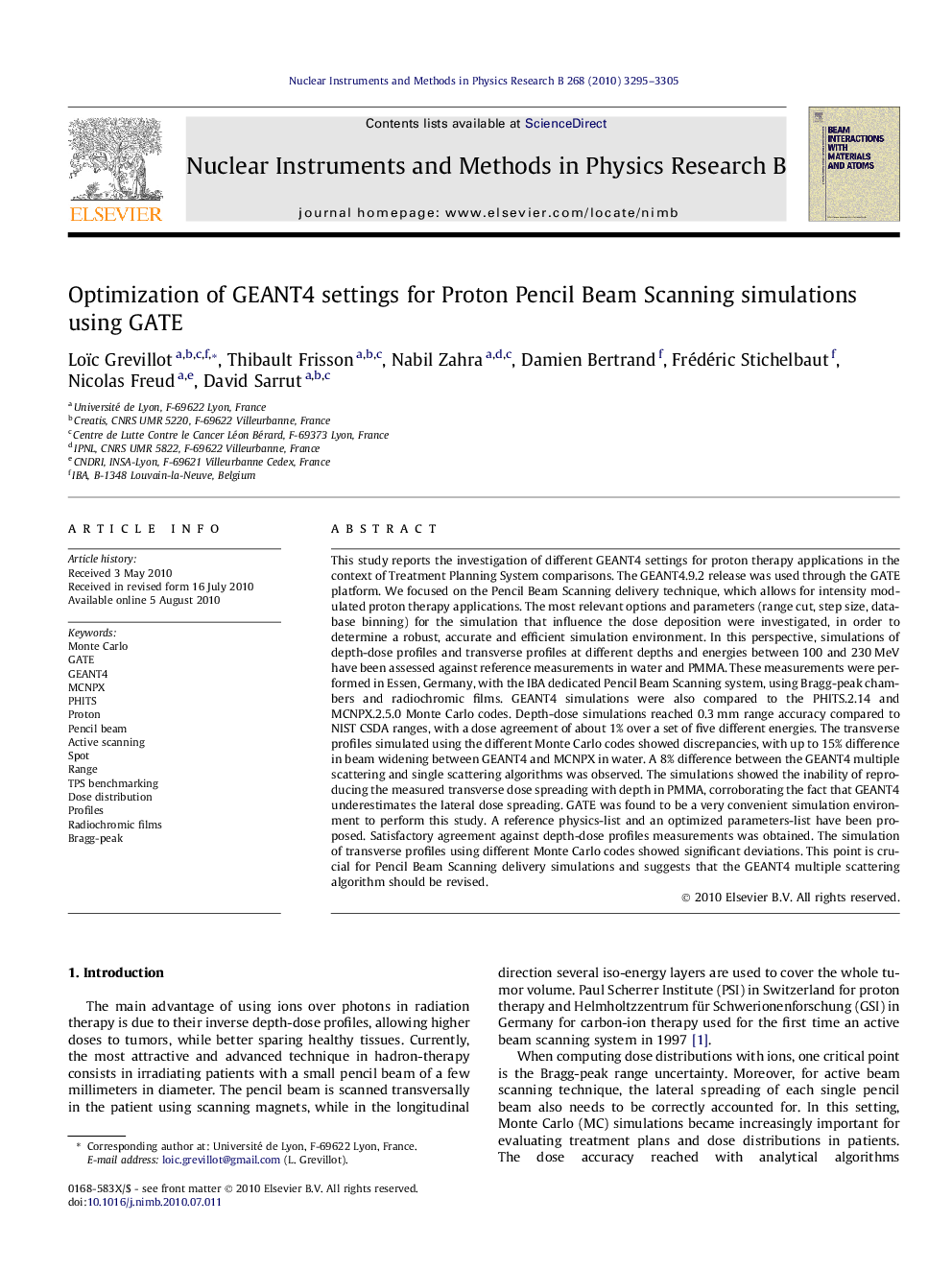| Article ID | Journal | Published Year | Pages | File Type |
|---|---|---|---|---|
| 1683215 | Nuclear Instruments and Methods in Physics Research Section B: Beam Interactions with Materials and Atoms | 2010 | 11 Pages |
This study reports the investigation of different GEANT4 settings for proton therapy applications in the context of Treatment Planning System comparisons. The GEANT4.9.2 release was used through the GATE platform. We focused on the Pencil Beam Scanning delivery technique, which allows for intensity modulated proton therapy applications. The most relevant options and parameters (range cut, step size, database binning) for the simulation that influence the dose deposition were investigated, in order to determine a robust, accurate and efficient simulation environment. In this perspective, simulations of depth-dose profiles and transverse profiles at different depths and energies between 100 and 230 MeV have been assessed against reference measurements in water and PMMA. These measurements were performed in Essen, Germany, with the IBA dedicated Pencil Beam Scanning system, using Bragg-peak chambers and radiochromic films. GEANT4 simulations were also compared to the PHITS.2.14 and MCNPX.2.5.0 Monte Carlo codes. Depth-dose simulations reached 0.3 mm range accuracy compared to NIST CSDA ranges, with a dose agreement of about 1% over a set of five different energies. The transverse profiles simulated using the different Monte Carlo codes showed discrepancies, with up to 15% difference in beam widening between GEANT4 and MCNPX in water. A 8% difference between the GEANT4 multiple scattering and single scattering algorithms was observed. The simulations showed the inability of reproducing the measured transverse dose spreading with depth in PMMA, corroborating the fact that GEANT4 underestimates the lateral dose spreading. GATE was found to be a very convenient simulation environment to perform this study. A reference physics-list and an optimized parameters-list have been proposed. Satisfactory agreement against depth-dose profiles measurements was obtained. The simulation of transverse profiles using different Monte Carlo codes showed significant deviations. This point is crucial for Pencil Beam Scanning delivery simulations and suggests that the GEANT4 multiple scattering algorithm should be revised.
